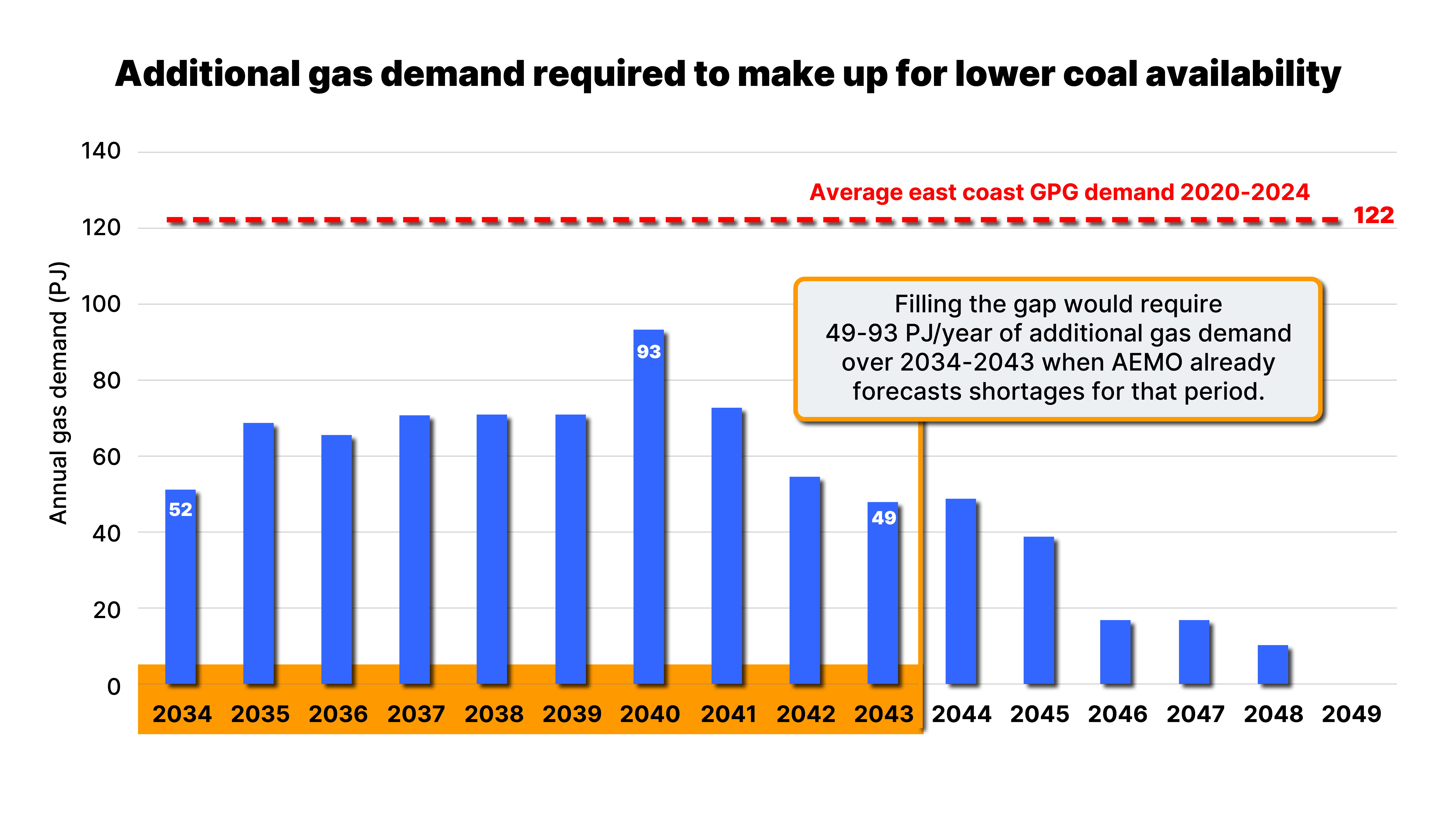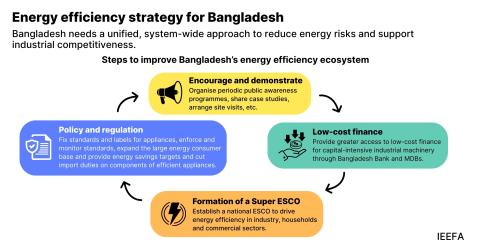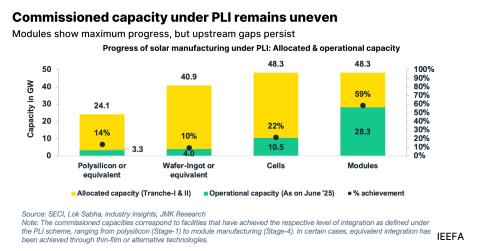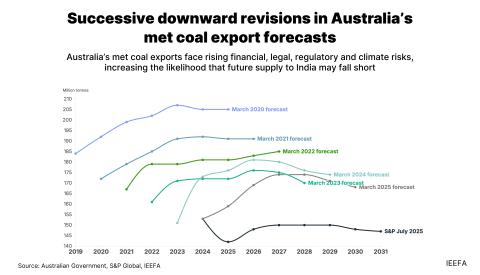Prolonging the retirement age of coal generators puts affordable power supply at risk

Key Takeaways:
Operational coal power stations in the National Electricity Market (NEM) average 38 years old, close to the average historical retirement age of 42 years.
The reliability of coal power plants deteriorates as they near retirement - historical experience for plants that have closed indicates that leading into retirement 34% of their capacity is unavailable on average.
Proposals to extend the life of ageing power plants often fail to plan for poor coal reliability, which could lead to electricity supply shortfalls. For example, analysis by Frontier Economics of a policy to delay coal closure assumed coal generation levels on average 9,300 gigawatt-hours per year (equivalent to power consumption of 2 million households) higher than one would expect based on the historical availability of retiring plants.
To cover such a power supply shortfall using gas would strain the domestic supply of gas and lead to spikes in the price of electricity and gas.
EMBARGOED TO 16 APRIL 2025 (IEEFA AUSTRALIA): Extending the operation of Australia’s coal-fired power plants will lead to increased risk of power supply shortfalls due to their advanced age and deteriorating reliability. Covering for these shortfalls at short notice would entail large increases in gas consumption for power generation that would exacerbate expected gas supply shortfalls and likely cause major power price spikes. These are the findings of a new report from the Institute for Energy Economics and Financial Analysis (IEEFA) entitled Delaying coal power exits: A risk we can’t afford.
Johanna Bowyer, Lead Analyst, Australian Electricity at IEEFA, has reviewed the historical availability of coal-fired power stations as they approach retirement to understand how the Australian coal fleet might perform as it ages.
“Since 2000, 13 coal-fired power stations have closed in the NEM, totalling 8 gigawatts of capacity. Their average age upon closure was 42 years,” Ms Bowyer says.
“The average availability of these power stations in the 10 years before they retired was quite poor, at 66% on average. That means that on average 34% of a plant’s capacity was unable to produce power.”
Co-author of the report, Tristan Edis from Green Energy Markets, highlights the implications of low coal reliability as power stations age.
“Over the 2030s, the existing coal-fired power stations will be close to, or have exceeded, the age at which past coal plants typically retired. We should be planning for the likelihood that they will suffer a similar deterioration in their availability,” Mr Edis says.
“Proposals that extend the life of existing coal power plants need to account for the fact that such old plants are likely to be far less reliable than they used to be, but this is often neglected.
“For example, Frontier Economics modelling of a strategy to delay the retirement of coal power plants assumed those coal power plants could achieve utilisation (often referred to as capacity factors) of 72-81% over the mid 2030s to mid 2040s. This appears to be unrealistic given the experience of plants nearing retirement.
“If you were to assume more realistic utilisation in line with what we’ve seen in the past from power stations before they closed, you’d see a substantial shortfall in generation from coal of 9,300 gigawatt hours per year on average over 2034 to 2043. To put this into perspective, this is equivalent to around 2 million typical households without power.”
The report finds that if there are not adequate plans in place to prepare for the poor levels of coal availability, and we had to then draw upon gas turbines to fill the gap, it would require an additional 49-93 petajoules (PJ) of gas annually from 2034-2043.
“This is a large amount of additional gas considering the average amount of gas used for electricity generation over the past five years was 122PJ per year. This additional gas requirement would have serious consequences for the price and availability of gas for other consumers,” Mr Edis says.

Source: IEEFA analysis, AEMO data on historical gas demand from GSOO 2025. Note: GPG = gas-powered generation.
Beyond these energy supply reliability risks, the report details other significant risks and costs associated with extending the reliance on ageing coal power plants.
“As both the Australian Energy Regulator and the Energy Market Operator have noted, poor availability of ageing coal power plants has been a key cause of wholesale price spikes in recent years. This would likely get worse over the next decade based on a policy of extending the life of coal power plants, rather than replacing them with new power plants,” Ms Bowyer says.
“Further, extending the life of coal power through refurbishments could be an expensive pathway, with costs for historical refurbishment projects ranging from $400 million to $1.3 billion. A number of these projects didn’t go ahead as the owners of coal plants decided other options to secure supply were economically superior. The Muja AB refurbishment did proceed but faced many technical issues and schedule and cost overruns, and the plant operated with very low utilisation of 20% even after the upgrades.
“So, there are questions around the viability of refurbishment projects. Operators may also struggle to access finance for expensive refurbishments given most Australian banks have policies to exclude lending for investments in coal generators.”
The analysts have also found that serious safety issues have afflicted Australia’s ageing coal power, with fires at Hazelwood, Yallourn, Morwell and Northern, and technical issues leading to dangerous explosions at Muja AB, Yallourn, Hazelwood and most recently Callide C.
“These examples serve as a warning that decisions to extend the operation of coal power stations should not be made lightly, and need to be made with a thorough understanding of the safety risks associated with these power plants,” Mr Edis says.
Ms Bowyer concludes: “Delaying coal exits introduces risks to reliability, power prices, safety of workers and the community and could require expensive refurbishment costs, for which the owners may struggle to access finance. It would also have major implications for emissions. Rather than seeking to delay the exit of coal, we need to be accelerating the roll-out of replacement capacity from renewable energy and battery energy storage.”
Read the report: Delaying coal power exits: A risk we can’t afford
Media contact: Amy Leiper, ph 0414 643 446, [email protected]
Author contacts: Johanna Bowyer, [email protected]
About IEEFA: The Institute for Energy Economics and Financial Analysis (IEEFA) examines issues related to energy markets, trends, and policies. The Institute’s mission is to accelerate the transition to a diverse, sustainable and profitable energy economy. (ieefa.org)











